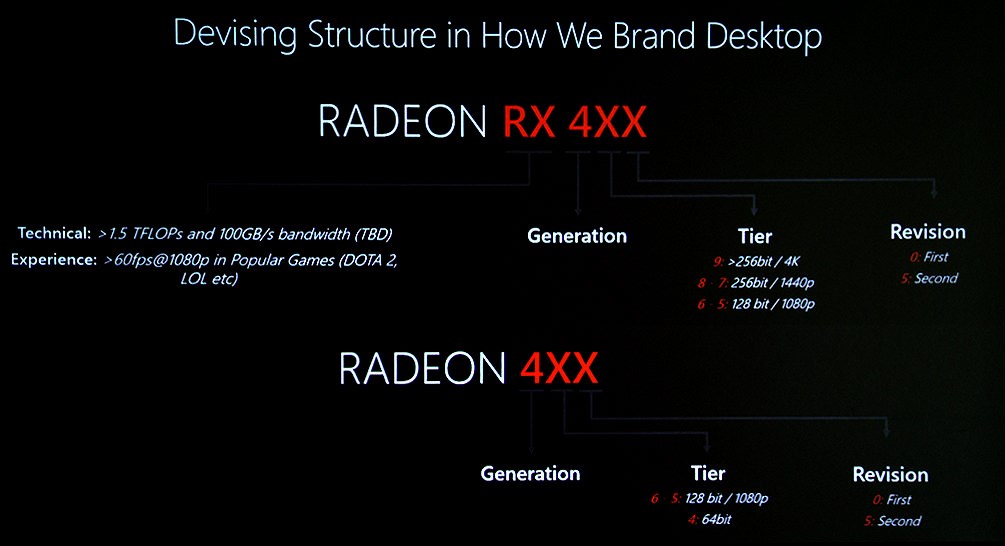Do note that this is just an explanation of how the naming scheme was designed, AMD explicitly said this is not a confirmation of upcoming products. The most interesting thing perhaps is that the naming scheme is designed to incorporate second-generation cards, these would end with the number "5". If these parts like perhaps Radeon RX 485 are on the horizon, they could offer things like higher clockspeeds and lower power consumption than the first generation.
The RX parts
The RX naming will be used for three groups, the top tier being the 49x which should have a memory bus greather than 256-bit and 4K gaming support. As mentioned before, this is not confirmation of upcoming products, but perhaps this slot will be occupied by the future Vega GPU.
Moving down a notch we have the 48x and 47x, these have a 256-bit memory bus and 1440p gaming support, and next we have the 46x and 45x with 128-bit memory bus and Full HD gaming support.
To quality for RX branding, a card needs raw computing performance in excess of 1.5 teraflops and a memory bandwidth of at least 100GB/s. Furthermore, they should be capable of playing popular games like DOTA 2 and LoL at 1080p with 60fps.
Non-RX cards
There may be non-RX versions of the 46x and 45x, these would also have a 128-bit memory bus and 1080p gaming support. The lower tier is the 44x, these cards would have a 64-bit memory bus.

Source: VideoCardz and Tweakers